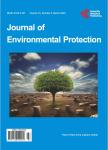Method for Evaluating the Influence of Obstruction of Sea Breeze by Clusters of High-Rise Buildings on the Urban Heat Island Effect
Method for Evaluating the Influence of Obstruction of Sea Breeze by Clusters of High-Rise Buildings on the Urban Heat Island Effect作者机构:Graduate School of Information Systems University of Electro-Communications Tokyo Japan
出 版 物:《Journal of Environmental Protection》 (环境保护(英文))
年 卷 期:2014年第5卷第11期
页 面:983-996页
学科分类:1002[医学-临床医学] 100214[医学-肿瘤学] 10[医学]
主 题:Urban Heat Island Effect Sea Breeze Clusters of High-Rise Buildings Weather Simulation Model GIS
摘 要:This study aims to propose a method for quantitatively evaluating the influence which the obstruction of sea breezes by clusters of high-rise buildings has on the urban heat island effect using a weather simulation model and Geographic Information Systems (GIS). Specifically, a method of evaluating the influence of the obstruction of sea breeze by high-rise buildings on the urban heat island effect was proposed. In the method, two scenarios that imagine urban forms which differ with regard to whether or not they contain high-rise buildings are created and weather simulation is conducted, and the results of the simulations are comparatively analyzed focusing on temperature and wind speed. Evaluation was conducted in two stages, and Shiodome of Minato City in the Tokyo Metropolis was selected as the region for evaluation. In two stages of evaluation, a rise in temperature of approximately 0.3 K and a reduction in wind speed of approximately 1 m/s were observed in a region approximately five to ten kilometers square downwind of high-rise buildings in the period 6 PM to 9 PM, and a higher temperature caused by the obstruction of sea breeze by high-rise buildings was identified. The fact that such a higher temperature was confirmed in the time period from 6 PM onwards, in which the temperature decreases, reveals that obstruction of sea breeze by high-rise buildings dulls the decrease in temperature which occurs from evening onwards, and influences nighttime urban heat island formation.



